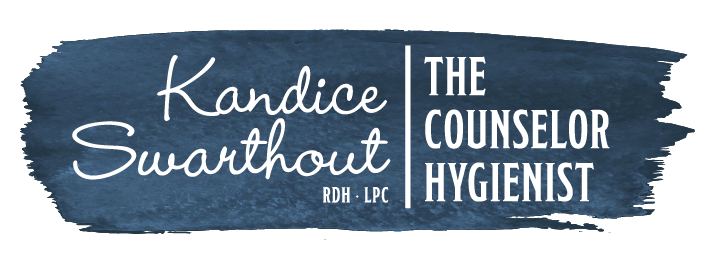Fearless Compassion Stories
Birth to Rebirth: A Postpartum Resurrection
March 24, 2020
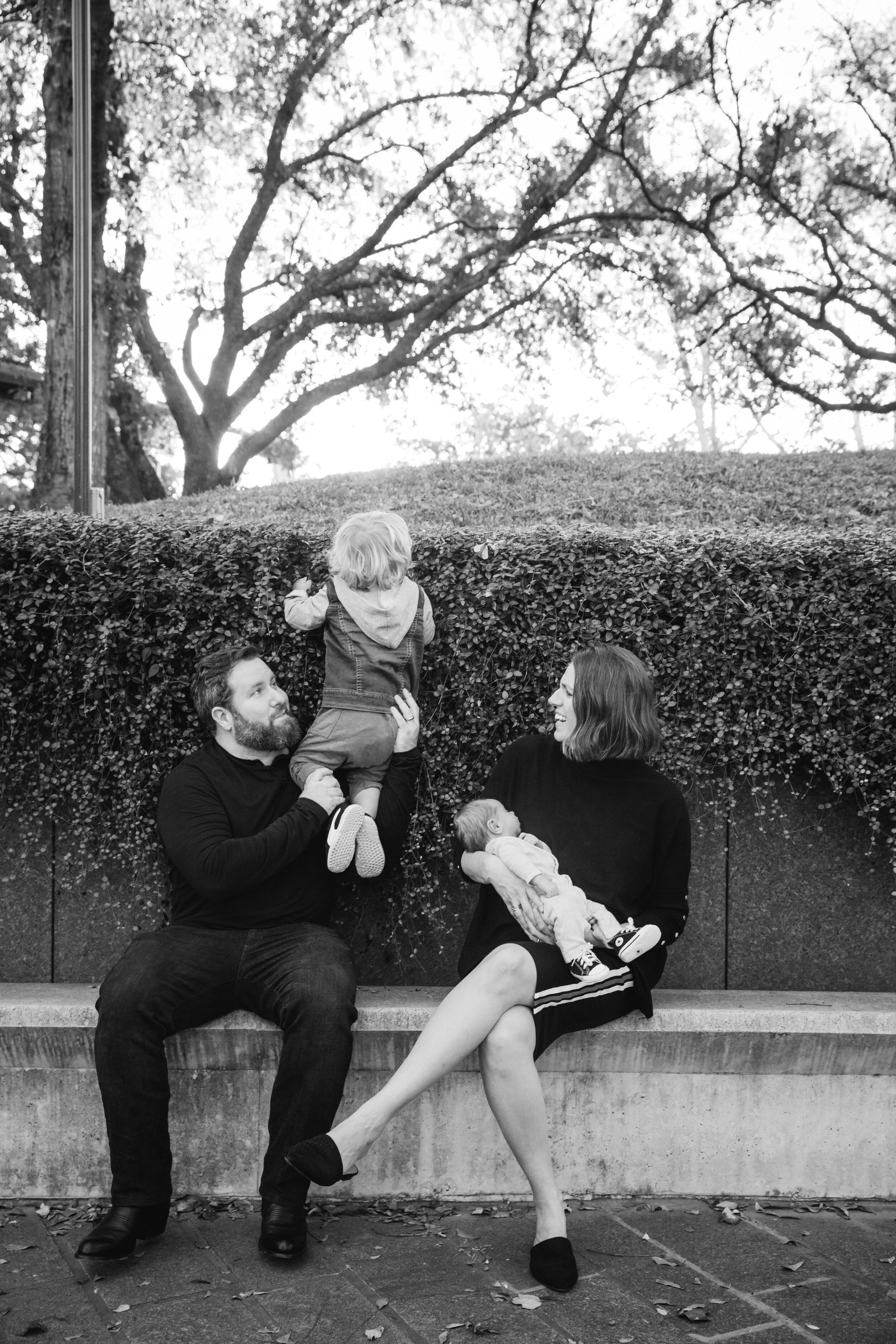
I feel like a fraud…the words of a new mother that resonate to the depths of her soul. A business owner of an event planning company that is featured in magazines such as Martha Stewart certainly could not be a fraud. How could a woman switch from organizing and executing the most extraordinary event you can dream up to crumbling at home alone with a tiny baby in her arms? How could her life exist in both the plane of creative genius and wondering if she can make it through the day without an emotional collapse? This is the crushing and debilitating pain of postpartum depression that is a reality for many women. Casie Fischer, owner of Thistle Wynd Productions, has found her way from the deepest pits of postpartum agony through vulnerability and habit change.
Like with her award-winning events, Fischer had a specific plan in place to create the perfect space for her children to thrive when she brought her second son home from the hospital. She quickly realized that her plan was not only impossible, but the fact she did not have the physical and emotional resources to execute it, left her in a puddle of guilt and shame. Fischer states, “when I got home from the hospital, I felt manic. I cleaned, cooked, and tried to create this perfect environment. I worked until I collapsed on the couch in front of my mom.” She began to realize the demands and expectations she put on herself were irrational and unrealistic. She felt pulled in many directions. People would ask if she was a stay-at-home mom. The answer was yes. Others would ask if she was a working mom. The answer was also yes. It was as if she was required to be defined by a label that qualified or disqualified her as “enough.”
It started to occur to Fischer that being a stay-at-home mom and operating a successful business did not fit in to what society was defining as proper motherhood. She started to feel shameful when other people’s social media stories looked so perfect and she was sitting home, un-showered, hoping to feel a glimpse of peace or happiness. She was feeling the realities of perfectionism and the imposter syndrome felt by so many moms. After a rock bottom breakdown, Fischer made the decision to seek counseling and find solutions for a situation that felt impossible. With the help of her therapist she made a few simple, but life changing, adjustments. She started with her internal health. A prenatal vitamin called Embrace HR began to quickly elevate her mood so that she could make other behavioral changes. She also chose small changes like taking social media off of her phone and charging her phone outside of the bedroom to not be tempted by the pull of social media. The biggest step, and hardest thing for those struggling in perfectionism, was to reach out to family and friends for help. She wondered if her “I got this” attitude left people close to her thinking she did not need help. She not only reached out; she found the courage to go to her friends with all of the walls torn down. No masks on, no pretending that it is “fine.” Fischer found that in the throes of vulnerability and letting others see how deep her pain ran, helped her find her way to the other side.
When I asked, “Do you have to love others to love yourself,” Fischer says, “Postpartum I did not have a lot of love for myself. It affected all of my relationships. If my husband wasn’t my rock, I don’t know how I would have made it to the other side” She believes that you have to love yourself first and is also grateful that she realizes that she could not love herself without others lifting her up.
Do the work. live the change.
Author, Kandice Swarthout, RDH, LPC
Boss Lady
March 24, 2020
She walked a fragile line between higher education and finding a satisfying career. The choice would define her future. Criminal justice had always held her interest and she felt the sting in her heart when she withdrew from the classes at the university after falling ill. A rainy winter afternoon phone conversation with her childhood best friend helped her choose between applying for a job at the local diner as a waitress or a front desk clerk at an extended stay hotel. She chose the hotel. That decision led Amber Nichols to be quickly promoted through the ranks until ultimately becoming a General Manager in record time.
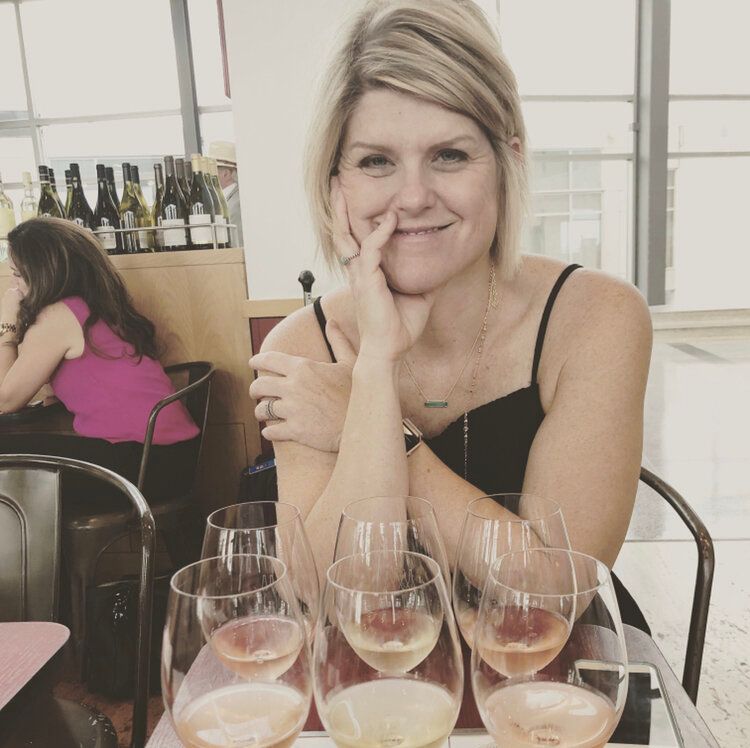
Hotel management provided multiple opportunities including building and opening new properties and mastering the day to day business operations. As the months turned to years, Nichols (can you use Amber instead of Nichols?) dreamed of bigger pursuits and returned to college to earn an associate’s degree in Criminal Justice. However, while doing so she landed a position that allowed her more flexibility and time to devote to school. Little did she or anyone else know that would change the course of her career. As the Store Manager of family owned Austin Window Fashions, Inc. in Austin, Texas, Nichols dedicated herself to the family owners as a loyal and reliable employee. When owner Thomas Thom called one of her references from her hotel days prior to hiring her he was told “Do you need someone to run your company? Because that is what she can do.” And that is what she did. During the first several years with AWF, she was also committing herself and her life to fitness and wellness. Her 20’s led her down a path of an unhealthy lifestyle and after having her daughter, Nichols fell into the reality of her health situation and made drastic fitness and nutrition changes. She lost over 100 pounds and even competed in a physique competition where, at 37, gave women in their late teens and early 20’s a run for their money.
Now, 20 years later, Nichols is a proud partner and President of Austin Window Fashions, Inc. where she feels immense responsibility for the 50 employees that rely on her every day. She is a real-life example of working your way to the top through hard work, persistence, and loyalty. When I questioned Nichols about how she balances the pressure of managing 50 people and maintaining her healthy lifestyle, she offered two rules in which she applies to both her professional and work life. First, she always sets aside one hour a day for exercise or selfcare. She says, “when I commit to that hour, stress and worry fade to the background. It is almost like it thaws me out.” Secondly, one of her rules of leadership that she also applies to everyday life is, when feasible, always wait 24 hours to respond or react to something emotionally charged. Nichols lives by the principle that reactivity can often cause more problems where time and distance will allow you to have a more educated and informed response and/or decision.
And finally, I asked her the question I pose to all of my storytellers: Do you have to love yourself before loving others? Nichols says, “100% love yourself before you can love anyone fully. To put all of your love onto someone else and not invest in yourself is codependency. As females, we pick ourselves apart and loving ourselves can be a daily challenge, but in order to be fully able to love others we have to overcome this challenge.” She believes that self-love is a lifelong process that requires ongoing assessment, effort, forgiveness and acceptance.
Do the work. Live the change.
Author, Kandice Swarthout, RDH, LPC
First to Respond,
Last to Heal
march 24, 2020
“Major vehicle accident - rollover, report of two ejected.” For some, this sounds like everyday emergency dispatch radio chatter. For firefighter/paramedic, Dustin Bortzfield, it is a nightmare that replays in his head. When they arrived on scene there was 9-month-old female and 9-year-old male, ejected from vehicle. Every July 4th for the last 14 years, he has relived every moment of these events. The memories are not just in his head, but also in his body. He feels like he is physically back on that dark Texas highway, on his knees, using every ounce of physical and mental energy he had to save the infant’s life while attempting to intubate the tiny child. On this night, the resuscitation efforts were not enough. When the memories are triggered, Bortzfield wonders what she would look like now. He wonders what her parents do to remember her. He feels the pain of the loss as if no time has passed since that hot summer night.
Historically, the fire department has not been equipped to handle Post Traumatic Stress Disorder (PTSD) among first responders. Until recently, there has been very little support for firefighters struggling with such haunting memories. Bortzfield knows this all too well and used to live these memories in silence. Slowly, but surely, fire departments across the country are beginning to recognize the serious issue of secondary trauma and PTSD first responders live with every day. Some are even stricken with substance abuse and/or suicide due to lack of coping skills and support.
Bortzfield spent a time in his career not realizing some of the symptoms he was experiencing were from secondary traumatic stress. He began to notice that his tolerance for trivial things started to diminish after being deployed to Hurricane Gustav in 2008. He says, “Here we are transporting people out of their homes that are terrified they are coming back to nothing. We walked with people through a terrible situation for days. When we could take a break, we slept on a gym floor. After we were released, 7 hours down the road, I hear a lady complain about her food at the restaurant where we stopped. It was like her life was ruined over it.” In that moment he began to see how the stressors of the job affect his daily life and his view of the world.
In the midst of noticing his decreased tolerance, Bortzfield knew that other factors like sleepless nights and being exposed to dangerous situations were potentially affecting his personal life. Our first responders cannot change the world around them, so they have to make choices for personal wellness. The building will still catch on fire and the fatality accident will still happen. He says that you have to “Handle it as it comes because if you don’t there are repercussions down the road. You never know when it is going to bleed out.” He must make a choice to adjust this own mental and physical attitudes in order to cope in a high-stress environment and many first responders have not been taught these coping skills. Bortzfield finds that engaging in physical activities like lifting weights, playing softball, and hunting help him deal through the tragedies of the ones he supports. Engaging in meaningful discussion about an incident soon after it occurs, helps him process the events and organize the traumatic situation in his head. It remains that most first responders will only communicate these details with colleagues which can create stressful home situations. Partners that do not understand the impact of post-traumatic or secondary stress may be left feeling disconnected and confused. It takes hard work and compassionate understanding for all involved to survive the hardships that being a first responder brings to relationships.
I asked him the question I ask of all of my storytellers: Do you believe the old saying that you have to love yourself before you can love others. His response, “No, I think it is bullsh*t. You can find yourself while loving others or things you love to do. For example, I can find my way out of trauma-related thoughts by immersing myself into something like my softball league or the people I care about.”
Do the work. Live the change.
Author, Kandice Swarthout, RDH, LPC
Full Circle
March 25, 2020
Strong men are raised by strong men. It is no mistake that when a young man has someone to look up to that he can envision a promising future. Sometimes the positive influence is not available from a parent and a coach or a teacher steps in to fill the role. This is the philosophy of Tevar (Tito) Watson, President of the Hamilton Park Bobcats in Dallas, Texas. Hamilton Park was the first African American neighborhood in North Dallas that was established in 1954. There was a desperate need for housing after racial bombings destroyed many African American homes in South Dallas. Hamilton Park began as a strong community where Watson’s grandparents owned a restaurant, liquor store, and beauty salon. The 1990s brought a surge of crime, drugs, and gangs to Hamilton Park that left many longing for the days of prosperity and peace they once knew.
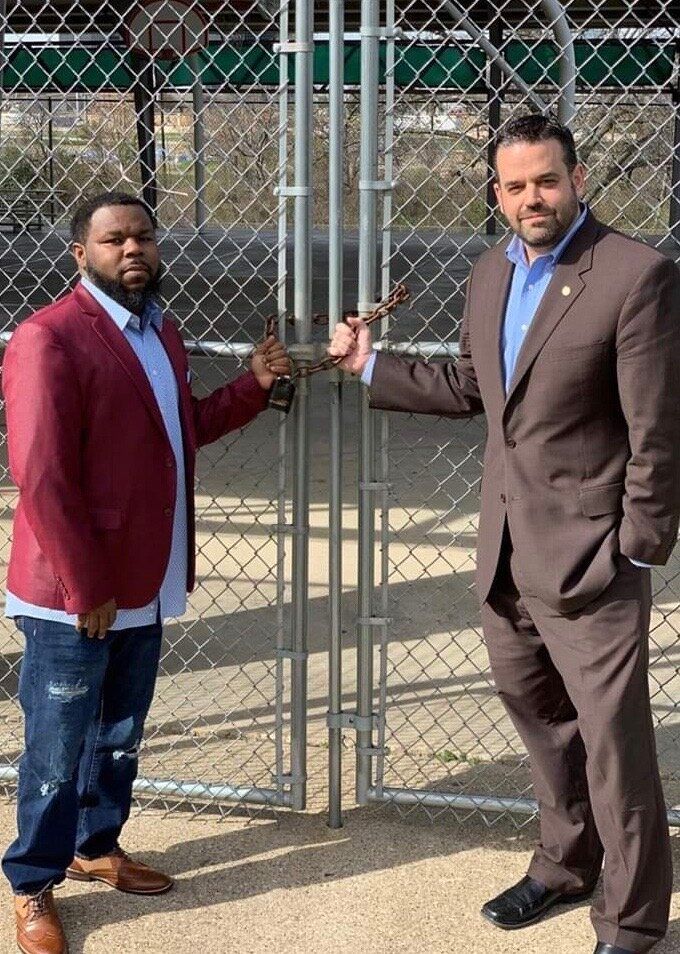
Watson, known as Coach T to the kids he mentors, was a child when the climate of Hamilton Park took a turn. He remembers his mom taking him to an adjacent neighborhood for football with hopes that the influence of a different neighborhood would keep him out of trouble. Watson says that he appreciates his mom’s efforts and made lifelong friends while playing Pop Warner League football. With a heart of gratitude, he also wishes his mom had seen it differently as he does today. What if instead of looking on the “other side of the fence” so to speak, she saw the potential for a better life in her own neighborhood. Watson views Hamilton Park as a place where young people can be raised to be proud of where they come from and pass that pride to future generations.
Watson says that when he took over the Hamilton Park Bobcats athletics program 9 years ago, “we were like the Bad News Bears.” He was not in pursuit of a successful sports team. He was not trying to convince kids they could make it in the NFL or NBA. He wanted to create a community that uplifts youth, focuses on work ethic, and gives them a place to belong. He says, “You’ve got to give these kids something to be proud of.” He fondly reminisces about the men that influenced him as a kid. This includes his legendary youth coaches, Steve Hammonds and Edward Stiger, and Young Life Leader Todd Beller. These men strongly influenced the person he is today and gave him purpose and vision as a strong male figure.
In 2015 Hamilton Park neighborhood basketball court was chained up due to homeless people taking it over at night. Needles left on the court became a hazard for the children and it was locked up. For some of the children, it was their only refuge for play and community. Watson teamed up with fellow Hamilton Park residents, including NBA champion Terrel Harris to be an active voice with city Counselman Adam McGough. Because of their efforts, a new rec center for Hamilton Park is currently under construction.
The Hamilton Park Bobcats program not only provides a place for kids to come together for mentorship and fellowship, but also opens doors to life-changing opportunities. This year, Watson will take middle school kids to Trinity University in San Antonio to give them a glimpse of college life. His life-long friend, Jeremy Boyce, is the athletic director of Trinity and joining forces to with Watson in hopes to motivate the children to take high school seriously. Watson hopes these memories will be leave a lasting impression and drive the students to want college opportunities.
Recently, three Hamilton Park middle school students were accepted into Jesuit College Preparatory School of Dallas. This is unprecedented and Watson is proud that these young men are paving the way for the future. He tells them, “YOU ARE TRENDSETTERS!” The young students are breaking barriers and setting the stage for the future of Hamilton Park.
The Hamilton Park Bobcats operate from donations made by community members and other supporters. Watson and his staff put their own money into the program. If you can donate any amount to this organization, 100% of it will be put to good use for the future of young men and women. Please donate at:
https://www.gofundme.com/f/6yaybg8?utm_source=customer&utm_medium=copy_link-tip&utm_campaign=p_cp+share-sheet
I asked Watson the question I ask of all of my storytellers: Do you believe in the saying that you have to love yourself before you can love others. He sat quietly for a moment and then said, “I don’t think that is true. There are lots of things I know I should do for myself, but I don’t. I encourage the kids to do them because I will do whatever it takes to make sure they have it better. I love others more than myself sometimes.”
Do the work. Live the change.
Author, Kandice Swarthout, RDH, LPC
A Mother's Ultimate Battle
May 5, 2020
It started with 4 pills. Contrary to his mother’s advice, he got on the dirt bike. The day ended with an untreated injury that would spiral his life out of control. As a dentist, Sharon Parsons, never dreamed that her son would be held hostage by a drug in which she had a license to prescribe to patients. The junior in college, Sean Herman, accepted 4 OxyContin, a prescription opioid used to treat pain, from a friend to relieve the discomfort from the dirt biking injury. Those 4 pills changed all of their lives forever.
Sean was a “normal” kid, as his mom describes him. He was bright and played hard. He was not a troubled teen and did things that teenaged boys do like sneak out, drink, and maybe even smoke pot occasionally. The OxyContin Sean accepted from his friend had such an impact on his brain and he was quickly able to replenish his supply to satisfy the newfound cravings. This was an open door to a series of events that led to stealing and lying. Sharon would notice that he was “off” in that he seemed one step behind in his thought processes and always had an excuse for his behavior. In 2010, Sharon confronted Sean and he came clean about his drug use. As a concerned parent, Sharon sought out a rehabilitation facility and promptly admitted her willing son.
Rehab tends to lead addicts deeper into their compulsion. This happens when one discovers new ways to use or hide use. They glean seemingly brilliant ideas that will assist in their efforts to remain secretive in addiction from members of their recovery group.
Tragically, while in rehab, Sean discovered that OxyContin is a synthetic heroin that satiates the same receptor sites. Instead of emerging from rehab sober, Sean reentered the world as a heroin addict.
Sean’s disfunction became so impactful on the family that Sharon had to make the decision no parent ever wants to face. She forbade him from her home and sent him on his way to figure out life. She says, “This goes against every instinct as a parent. If I kick him out, will he be homeless? Will he die? Will he go to prison? If I let him stay, will he get his act together?” She did not wish to continue to live as an enabler and Sean went on his way. He found himself in Georgia where he landed back in rehab. Sharon says that it saved his life at the time. He was able to get clean and maintain a healthy relationship with a girlfriend.
Sean’s dad discovered that as long as he kept him close, Sean could maintain his sobriety. Sean went on to get a bachelor’s degree and became a very involved member of Narcotics Anonymous (NA). On a sunny afternoon, Sean went on one of many NA outings. On a rafting trip with the friends that supported each other’s sobriety through authenticity and accountability, Sean tore his ankle and required surgery. Despite his disclosure to the surgeon that he was an opioid addict, Sean left the hospital with a prescription of opioids that, once again, turned his life upside down.
Sharon was still hopeful because she respected Sean’s girlfriend and gleamed hope that she could encourage him back to NA. Unfortunately, quite the opposite occurred. His girlfriend also became addicted. Her father, a physician, became their supplier and the spiral continued.
Then it happened, the moment Sharon had prayed for. Sean called and asked for help. “Mom, I want to get this under control. I am serious. Can you help me?” Of course, she could! Elated and relieved she invited him to move into her home immediately. Sean gratefully accepted his mother’s loving invitation and asked for one more night to spend with his girlfriend to say his goodbyes before setting his intentions towards sobriety once again.
At 4:00 the next morning, September 21, 2015, the ultimate fear of every parent occurred. Sharon was woken by authorities pounding on her front door. They were there to tell her Sean was dead. He had overdosed. She was so close to getting her son back. Just hours away from parenting her adult son back to the path he was seeking. Within hours, family and friends assembled at her home to offer support and sympathy. Just as Sharon thought things could not get more tragic, her mother collapsed in the kitchen and died. Crumbled in grief and sorrow, Sharon gathered every ounce of energy to write two eulogies and plan two funerals. In those moments she felt determined to persevere through her grief and decided she would “not drop into the abyss.” She had a second son that was in dental school and a dental practice full of employees that needed her.
One day after Sean’s death, one of his best friends came to her door with a message. He held in his hand a piece of a healing rock from a native tribe. The friend looked at Sharon and said, “The tribe elders believe that when a child dies before a parent, the child lives in the parent’s heart. The parent is responsible for the two of them.” He left the rock as a reminder of Sharon’s mission. This was the beginning of Sharon’s fight against the opioid crisis.
Sharon, 63-years-old and now the president of the Ohio Dental Association, shares being one of the few women in dentistry early in her career. She recalls a conversation with Sean as he told her that she needed to be the president of the association to carry the torch for all of the women that came before and after. So, she set out on that path. The journey was not an easy one, but one that brought her directly fight the cause against opioid addiction.
While Secretary of the Ohio Dental Association and at a board retreat (and the only woman in attendance), Sharon overheard a colleague say, “Why the hell are we spending all of this money? Let the addicts kill themselves.” Nearly paralyzed in heartache, she made her way to the lady’s room where she broke down and decided it was best to quit the board. After prayer and rest, she decided not to quit. She pressed on and carried her son with her just as the native elder had said.
A series of events and opportunities to speak out against the over-prescribing of opioids led Sharon to a meeting in Washington, D.C. where new laws about opioids were discussed. She sat in shock listening to dentists from all over the country speak up to say that they “don’t like mandates! We cannot be told what to do!” In a whirlwind of disbelief and on the verge of rage, Sharon approached a microphone in front of 1200 colleagues from across the country. Colleagues that were flying flags for the status quo of opioid over-prescribing. With every ounce of courage and fueled by anger, she marched up to the mic and told Sean’s story. The room fell silent as her voice shook. She tried to hold back the tears, but they forged to the surface. She finished, turned and walked towards her seat while the room remained hushed. As she sat, the audience stirred and exploded into a standing ovation. That act of courage was a key influencer in passing a new bill to regulate the prescription of opioids. Sharon playfully says, “I was so pissed. I essentially eloquently gave 1200 people the finger and it worked!”
In that moment, Sharon knew she was on the right path in her quest to fight opioid abuse. She has collaborated with Dr. Dave Kimberly, an oral surgeon that was self-admittedly formerly lackadaisical in his opioid prescription writing. This power team has presented for various dental organizations in Ohio and Sharon has been featured on CBS Sunday Morning. Before stepping onto the stage or going live for a presentation, Sharon pauses and talks to Sean. She says, “Please let me say what people need to hear.” Inevitably, words she did not plan rise and leave her mouth as if Sean were speaking through her.
If you would like to know more about Sean and Sharon’s fight to prevent other families from such a tragedy, visit her non-profit at www.avoiceforsean.org. There you can see Sean’s sweet smile and bright eyes and that he did, indeed, bring joy to his family. It started with 4 pills
I asked Sharon the question I ask every storyteller: Do you believe in the old saying that you have to love yourself before you can love others? She responded with, “YES! I think you can love others without loving yourself, but it is easier to love yourself first. I used to not love myself. After getting divorced, I had to find myself. I love more fully now that I love myself.”
Do the work. Live the change.
Author, Kandice Swarthout, RDH, LPC
Pain to Purpose: A Circle of Grief
May 21, 2020
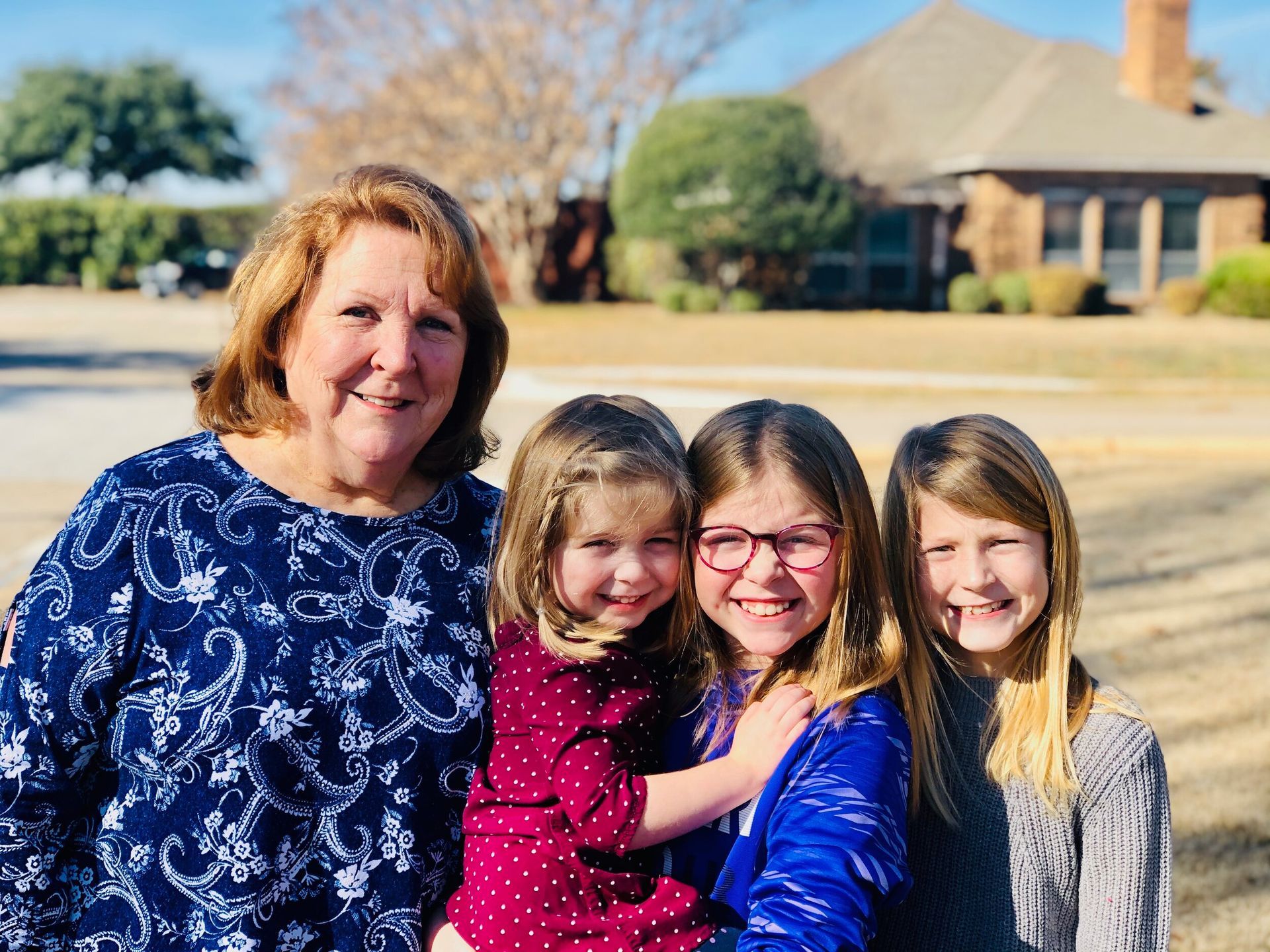
She sits with people in their pain. She delicately holds the space for grief so that it may unravel and transform from chains into purpose. She holds a space in a way that makes them feel understood and seen. You see, she has suffered a great loss. Every loss that someone in her GriefShare® group has experienced, she has walked the path. Pam Ridling’s grief resume began at 9-years-old when her mother died giving birth to her 7th sibling. One might think that the sorrow of a young girl would be handled with the utmost care. This was not the case. Pam’s first lesson in loss was that you never talk about the person again. Her father ordered all of the children to never utter another word about their mother or speak of any events before her death. All of her mother’s belongings, including photos, were removed from the home. Essentially, she was to erase the memory of her beloved mother from her heart and mind and move on as if she never existed.
Without a mother and her newborn brother sent away to an aunt and uncle’s house, Pam and her siblings continued on their way as instructed. She had no idea that a childhood of repressed chronic grief would lead her to a path of serving others. Pam’s adult life loss experiences include a miscarriage, suicide of a close friend, divorce, death of her second husband, loss of a brother that was a cherished friend, death of two nephews, her father, another close friend and her two children, all grandparents, and all aunts and uncles. She says it seems the losses come in waves and there have been times it was as if she was constantly in fresh grief. As soon as she could pull herself up from one blow, another was on its way.
Cratered emotionally and mentally
Pam, now formally educated on the processes of grief, describes it as a “dark hole.” She says that she remembers being “cratered emotionally, mentally, and angry at God.”
The “wave” of six losses in 1984 put her into a 4-year depression that felt impossible to escape. After the death of her second husband, she attended a grief help group and became curious about what it would take to start her own group. Pam’s research led her to a group in Amarillo led by a hospice Chaplain. The Chaplain graciously allowed her to audit his current group so that she may see if it was what she had been seeking. By the end of the 6-week course, Pam was sure that this was, indeed, the type of course she wanted to facilitate. On the last day of the course, the Chaplain told her, “Pam, go for it! You have so much to offer.”
As she continued to seek the desired curriculum for her program, she found GriefShare®. GriefShare® is an international, faith-based organization that provides resources and refuge in the way of support groups for people in grief. Just as she gathered her resources and prepared to begin the first group, she was stricken with a new 18-month wave of loss that began with the death of her brother, Danny. In fresh grief, she was not sure if she could continue because she wanted to be emotionally available for the people in the group.
grief support was her calling
Two years passed while she managed the barrage of pain that comes with these waves of loss that Pam speaks of. Finally, on September 4, 2018 (her deceased brother’s birthday) Pam led her first-ever GriefShare® support group. Months later a lady and her daughter signed up. As they began to talk about the loss of their husband and father, Pam recognized his description. She sat listening to their story and quickly realized that their loved one was the Chaplain that so enthusiastically encouraged her to begin this group. The mom/daughter duo sat in gratitude as the daughter said, “So you are saying that my dad encouraged you so that you would, someday, encourage us.” At that very moment, Pam knew that grief support was her calling.
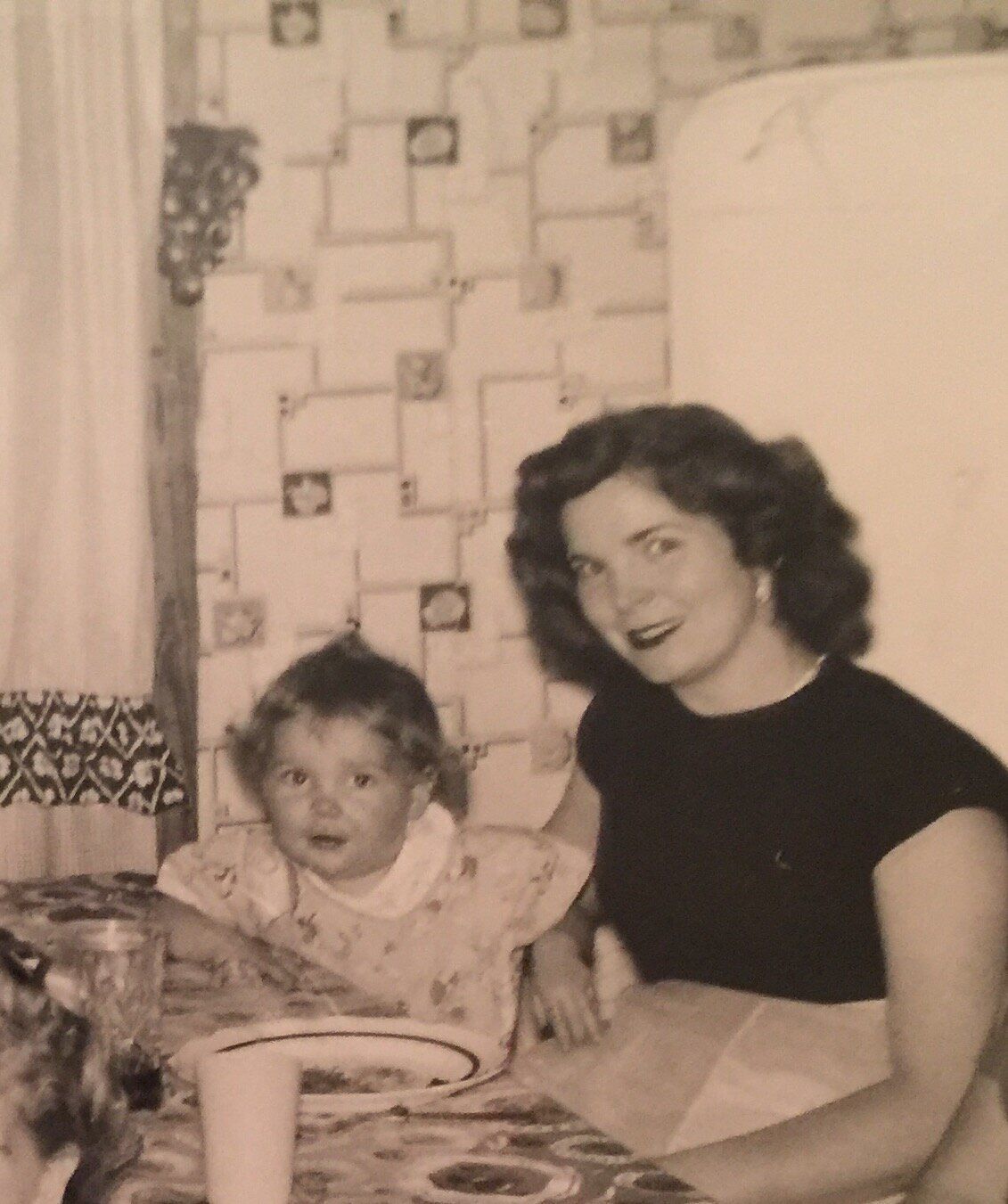
Pam currently facilitates a 13-week group from a church in Borger, Texas where her husband, Bruce, is the pastor. She describes her work as “passion-laden.” She takes great joy in seeing the transformation in the members. She says, “they come in pale and barely able to talk. They graduate with a smile and can talk openly about their loss. We do not move on from our grief, we move forward with the love for that person.” Pam describes grief and loss as being woven into the core of her being and her faith journey. Loved ones are redeemed, honored, and recognized through the processing of grief. She firmly stands on the ground that God is using her pain with and for purpose.
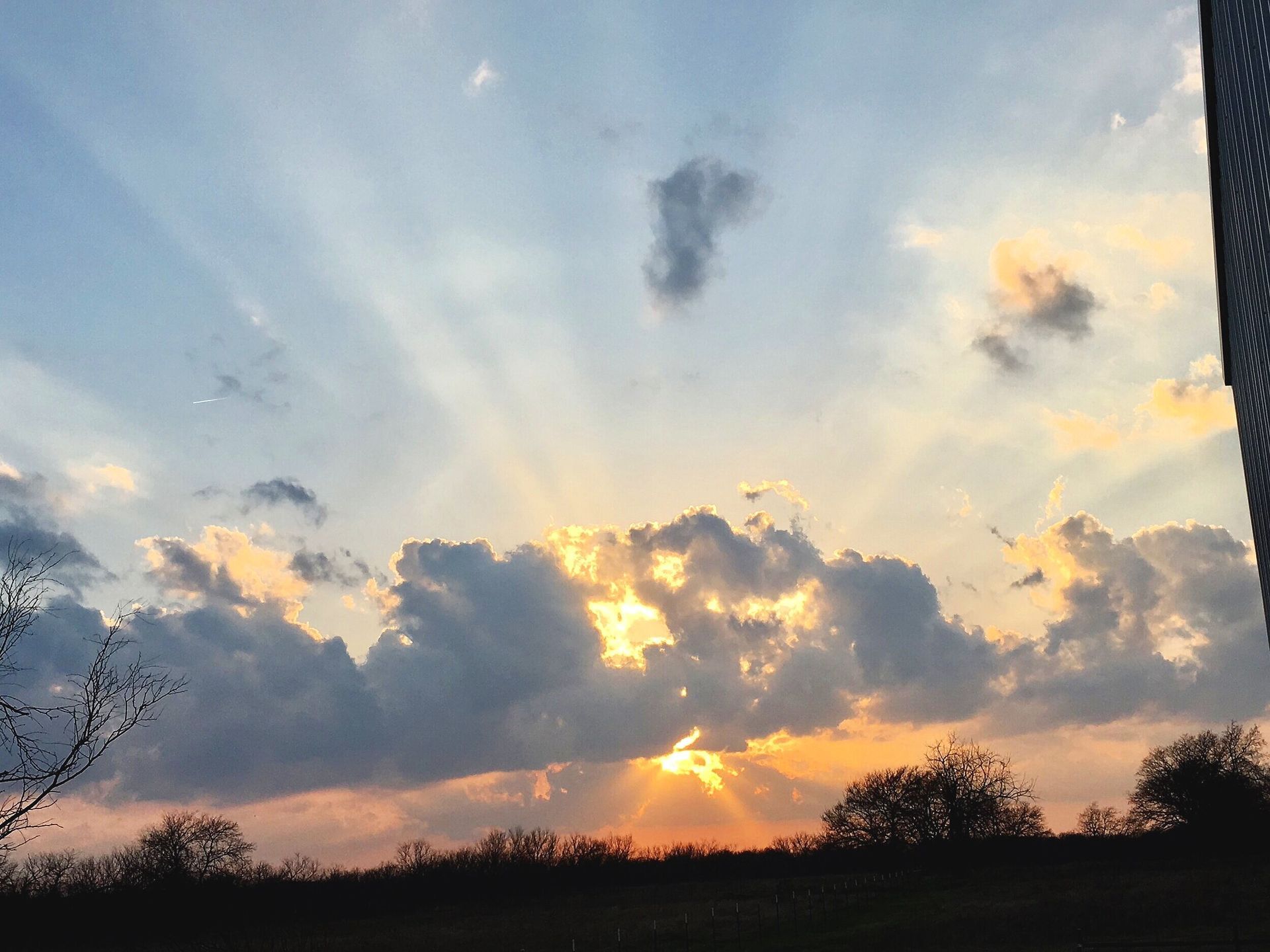
Do you have to love yourself before you can love others?
I asked Pam the question I ask of all of my storytellers: do you believe in the old saying that you have to love yourself before you can love others? She says, “Yes, I do! If you think of self-love as self-care, you have to take care of yourself to offer care to anyone else. It is a circle.”
If you or a loved one need grief support, visit the GriefShare® website for a community group near you at www.griefshare.org.
Do the work. live the change.
Author, Kandice Swarthout, RDH, LPC
Until We Meet Again
June 25, 2020
There he was as she rounded the corner of a busy office hallway. Nearly stopped in her tracks as he stood in a starched white shirt with a smile that took the air out of the room. His energy and presence occupied the entire space. She had never seen him before, but she knew she wanted to know him. Who was this lovely visitor and why was he disrupting her perfectly normal workday? At that moment, Kelli de la Torre had no idea how well she would know Alex and how they would impact each other’s lives.
this handsome new distraction.
As she coolly asked around the office about this handsome new distraction, everyone spoke of his kindness and integrity. Alex was a man loved by everyone. Time passed and Kelli thought of him often and could not unchain herself from the relentless pull of attraction. They were friendly, but Kelli kept her distance as she was in a relationship. Sometime after ending the relationship, she decided she was ready to get to know Alex better. She found out that Alex was helping raise his niece after his brother-in-law passed away from cancer. Kelli found this honorable and incredibly sexy and kept herself available for the chance to connect.
Showing up looking her absolute best, she let fate play out by getting to know him casually through work-related events. She recalls a story where after she presented at a company meeting, Alex leaned over to a coworker and said, “that is my wife.” From that instant, it was an office goal to couple these two flirty friends.
Living in different states, Kelli and Alex made a long-distance relationship flourish. Kelli says that it is difficult to put into words, but her feelings for Alex were unique. This type of healthy relationship was something she had not experienced before. Simply breathing the same air as he brought her joy. Being in his presence felt like home and she was certain this was not a feeling she wanted to lose.
she is not the marrying type.
As things got more serious, Alex began to speak of marriage. Oh, not this girl! Kelli was not the marrying type. She was perfectly happy being a life partner, but Alex wanted marriage and they agonizingly took a break from the relationship to reflect on the future.
Months passed with no communication and Kelli began to feel pulled towards Alex. She would not walk away from the person she knew to be her soulmate. She took a chance and called Alex. A friend later told her that when he saw it was her calling, his face lit up. They decided to meet, and Alex flew to Los Angeles. Giddy with excitement and anticipation, Kelli picked her favorite dress and set out on a date with her beloved. Little did she know that the conversation would lead to some of the most painful news she could imagine.
While catching up, it became obvious that Alex had something to tell her but could not muster the courage to say it.
Finally, he burst into tears and said, “I have cancer.” Not just any cancer, but one of the rarest forms of appendix cancer. A healthy, vibrant 40-year-old man with a type of cancer that could only be treated through experimental medicine.

They planned a wedding
Without hesitation, Kelli packed her belongings and moved to Houston to be near Alex as he started the excruciating journey of cancer treatment. As they took these steps together, the relationship deepened, and they planned a wedding.
In the midst of wedding planning bliss and cancer treatments, Alex went through a very experimental 8-hour surgery. Two and a half hours into the surgery, the doctor emerged for the operating room to report the tragic news that Alex’s cancer was so devastating that the surgery was halted. Alex would be sent home to spend his final months with friends and family.
Given the option of one more round of chemo, Alex took it. Two weeks prior to the start of the chemotherapy, they chose to preserve his sperm so that Kelli would have the opportunity to have a child. The fertility doctor was not hopeful that any of Alex’s sperm would be viable after such traumatic medical experiences. They optimistically did it anyway and Alex began the chemo.
how much time do i have left?
Not long into the treatment, Alex took a turn for the worst and was hospitalized. It was evident that the doctors were being avoidant, so Alex point-blank asked how much time he had left. The doctor, painstakingly, told him that he may have two weeks left.
As soon as the doctor left the room, Alex turned to Kelli and said, “Marry me. Be my wife, even if only for a short time on this earth.” Kelli accepted and they married a few days later on the rooftop of MD Anderson hospital in Houston, Texas. Ten days later, he died in her arms.
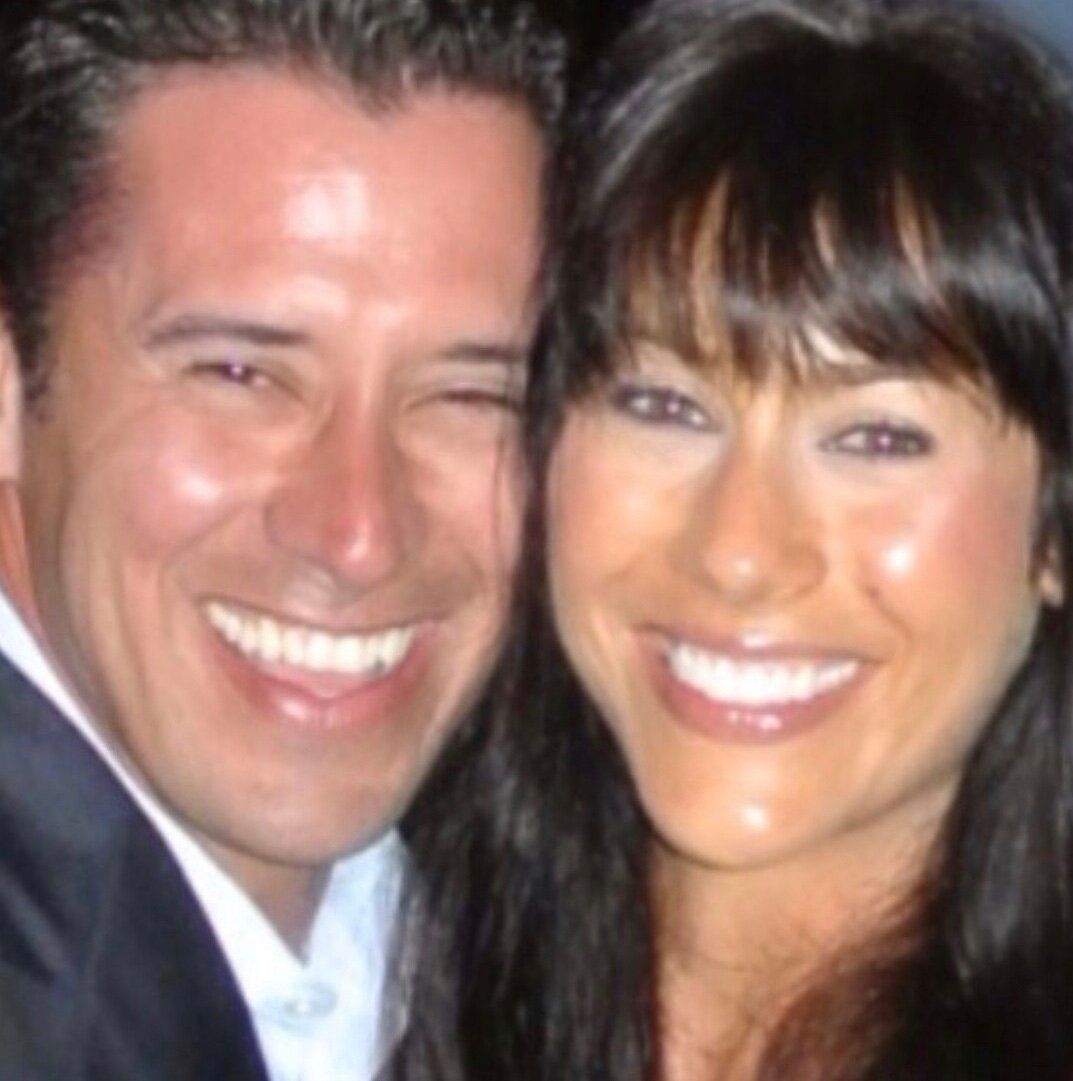
a flourishing life
This September will be the 6-year anniversary of Alex’s death. Kelli now lives what she calls a “flourishing life” with her 4-year-old son, Alex. You see, the fertility doctor was wrong and of all of the sperm and eggs used in the IVF treatment, only one “perfect” embryo survived. The path has not been easy. Kelli talks about a two-year period when her friends picked her up off the floor where she often found herself drenched in grief.
The Alexander de la Torre Project
Kelli found her way from the depths of sorrow through therapy, friend/family support, yoga, gratitude, and the belief that she will “directly experience him again.” She now honors him through keeping him very much alive in her home and through a non-profit called The Alexander de la Torre Project. The non-profit provides free yoga, meditation, and breathwork for oncology patients and their caregivers. Kelli is also a certified yoga instructor and works in private practice directly with oncology patients and caregivers to assist in their healing. Kelli’s courses and projects can be found at www.kellidelatorre.com.
Kelli’s life missions are to cultivate human to human connections and provide her son with a healthy perspective of death. She walks this earth each day knowing that her “twin flame” walks beside her.
I asked Kelli the question I ask of all my storytellers: Do you believe in the old saying that you have to love yourself before you can love others. Kelli says, “Yes, that is very yogi. What you do to one thing is what you do to all things. You must have a true love for yourself to give it out.”
Author, Kandice Swarthout, RDH, LPC
The Face in the Mirror
October 10, 2020
Her lesson in boundaries started early as she watched her mother rise from the ashes of the abuse inflicted by her father. It did not start as an abusive marriage. The unraveling of unattended wounds transformed her father into someone that was no longer welcome in their home. Once a nurturer, he now stood a shell of the man they once trusted. Her mother’s strength would be the foundation of Juliette’s life-long soul work. As an 11-year-old girl, she could not fully grasp the impact of these childhood experiences. As she looks back, she knows the culture of borders and boundaries her mother created is a lifeline to her current health and outreach to other women.
She challenges and explores the unnecessary and damaging agreements we make with ourselves that leave us standing in the quicksand of shame.
Juliette Marhofer Dugger, CPLC is a Certified Professional Life Coach that challenges women to live out the life God intended through the deep and uncomfortable work of clearing the spiderwebs from childhood wounds. She challenges and explores the unnecessary and damaging agreements we make with ourselves that leave us standing in the quicksand of shame. The kind of shame we carry through life that paralyzes and holds us back from peace and joy. Make no mistake, Juliette is no sugar coater. She pushes her clients to dig into the deepest and darkest corners of their souls to pull up unresolved “infections” that need healing through truth-telling and personal responsibility.
Juliette has a personal story of abuse beyond the experiences with her father that is coming to life in the pages of a book she is writing. For the purposes of this post, her wish is to shed light on topics that may encourage someone to take back their power and stand in freedom from personal binding chains. Juliette possesses the gift of human connection. As I spoke to her, I felt as if I were the only person on the planet. She has a special way of holding the space that feels sacred and protected. I hope the rest of this story inspires you the same way it inspired me.
no one gets to tell you how to feel.
Juliette started our discussion on boundaries with, “No one gets to tell you how you feel.” She prays for the women that do not feel fought for. The ones that feel left behind and desperate for change, but do not know how to find refuge from pain, power struggles, and abuse. She reminded me that when we forgive, it does not release the person from their transgressions, nor that we remove the boundaries. Forgiveness allows our hearts to heal without our perpetrator having any awareness that forgiveness is even on the menu.
When I told Juliette that if one person walks away with something from this post, it makes the time and effort worth it to me. I asked her for one sliver of soul work advice that might bring relief to someone’s life. In her eloquent and engaging manner, Juliette once again captivated my attention with her deep insight.

This question is the pathway to revealing the wound that we open over and over…
Juliette challenges every person to set aside journaling time and dig deep into one powerful and life-changing question. She said, “Ask yourself the question: what is my earliest, most painful childhood memory?” She goes on to say that this question is the pathway to revealing the wound that we open over and over. It exposes the toxic infection that causes us to give away our power. It exposes the reasons we repeatedly vilify others in order to find peace with our own behavior and reactions, but the war is within ourselves. If this question remains unchecked, it spreads the infection. The truth and healing lie in the answer. The first boundary is with us. That boundary stems from the unresolved answers to this hallowed question and is strategic to restorative soul care.
Once you expose the answers, boundaries will start to appear. They will begin to become clearer. The wounds will show you where physical and emotional boundaries need to be put into place. Sometimes those boundaries look like loving some people at a distance, remembering that your personal work belongs only to you. The only people that will balk at your new boundaries are the people that did not have any in the first place.
Juliette warns that this work and journaling exercise will not be a walk in the park. She recommends preparing the space to write with things of comfort such as a candle, a soft blanket, or soothing music. The space in which one answers this difficult question should be well thought out and not done in haste or as an afterthought. It may even be a good idea to have a trusted friend on standby in case the emotions that arise call for immediate support. She suggests giving yourself grace and the permission to feel the pain that will emerge. She says, “This is about you. Sit in it.”
Stop putting others on the radar and identifying what is wrong with them.
Juliette suggests that we find ourselves when we stop putting others on the radar and identifying what is wrong with them. When we choose personal responsibility and put ourselves on the radar by investigating the wounds that drove us to this place, we will discover freedom.
Juliette is deeply spiritual and has opened my eyes to a place of healing by challenging me to this difficult question. As I answer it in bite sizes each morning, my wounds slowly unravel, and I see the truth that I could not see before.
If you are interested in learning more from Juliette and being a part of her “Wildwell SOULcial,” check out her website at www.wildwellcompany.com. You can also follow her on Instagram @wildwellco.
I ask all of my storytellers the same question. “Do you have to love yourself before you can love others?” Immediately, I knew I did not need to ask this question of beautiful Juliette as she answered it over and over throughout the interview. She says, “you cannot give what you do not have.”
Do the work. Live the change.
Author, Kandice Swarthout, RDH, LPC

All Rights Reserved | Kandice Swarthout | A Tilley Wynn Website

